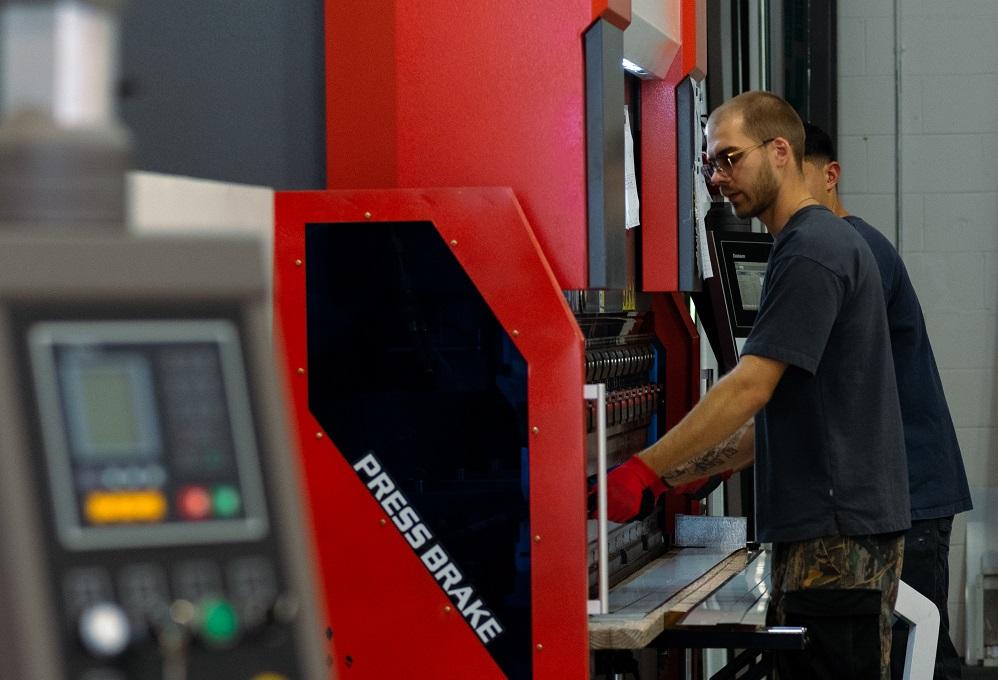Editor
- FMA
- The Fabricator
- FABTECH
- Canadian Metalworking
Tackling the talent gap: Welcome to the multiverse
Many roads to finding talent and efficiency solutions
- By Rob Colman
- January 16, 2024
Tackling the skills gap is a constant concern for shops. How do you find people? And when you do, how do you on-board them and keep them? I feel like many articles in this issue of Canadian Fabricating & Welding serve as reminders of your talent pool options. Welcome to the multiverse of recruitment approaches.
Brunswick Steel, for instance, hires individuals based on attitude and cultural fit rather than a particular skill set. Company President Justin Copp insists that cultural fit is much more important long-term than any one skill. With the company’s dedication to training from within, they are able to make this work for them. Brunswick also is doing more with less on its shop floor, streamlining press brake operations and introducing flow mechanisms that save labour costs and increase safety. The more streamlined it is, the less it panics over finding new talent. Read more about their story here.
Articles in the December 2023 issue of Canadian Fabricating & Welding serve as reminders of your talent pool options. Welcome to the multiverse of recruitment approaches.
This month’s Profiles in Manufacturing captures the value that Skills competitions and colleges offer in training up young talent. Engaging with local high schools and colleges creates an opportunity to find keen students like Ben Rainforth, who will be representing Canada in the welding competition at WorldSkills next year in France. Read all about him and his instructor Lee Yasinski here.
Engaging an apprentice is something that many smaller shops feel they can’t afford to do, or don’t understand how to pursue. ApprenticeConnect is a new web platform designed to help companies overcome this hesitation. The platform is a component of Career Launcher Apprenticeships, funded by the Government of Canada’s Apprenticeship Service Program, which provides hiring incentives of up to $10,000 per new apprentice. Read more about this here.
Community outreach into underrepresented communities can make a difference as well. At this year’s CanWeld Conference in Moncton, N.B., the organizers made an effort to engage with local indigenous communities and industry leaders to open a dialogue about the inclusion of Indigenous individuals in the welding industry. For instance, Terry Young, a Wolastoqiyik (Maliseet) from Kingsclear First Nation, spoke on the importance of indigenization in the workplace.
The upshot of outreach efforts and cultural sensitivity is fairly straightforward, in theory: If an underrepresented group feels recognized and respected in a workplace, their engagement will be more positive and there is more chance of attracting more employees from that group into that space.
The CWB runs a number of outreach programs for underrepresented groups in the welding industry. Find out how you might engage with the CWB to be part of that effort. It could pay dividends in future.
There’s no one-size-fits-all approach to engaging and hiring young employees. There’s a multitude of places to start your search, though.
subscribe now


Keep up to date with the latest news, events, and technology for all things metal from our pair of monthly magazines written specifically for Canadian manufacturers!
Start Your Free SubscriptionAbout the Author

Rob Colman
1154 Warden Avenue
Toronto, M1R 0A1 Canada
905-235-0471
Robert Colman has worked as a writer and editor for more than 25 years, covering the needs of a variety of trades. He has been dedicated to the metalworking industry for the past 13 years, serving as editor for Metalworking Production & Purchasing (MP&P) and, since January 2016, the editor of Canadian Fabricating & Welding. He graduated with a B.A. degree from McGill University and a Master’s degree from UBC.
- Trending Articles
Aluminum MIG welding wire upgraded with a proprietary and patented surface treatment technology

Achieving success with mechanized plasma cutting

Hypertherm Associates partners with Rapyuta Robotics

Brushless copper tubing cutter adjusts to ODs up to 2-1/8 in.

Gema welcomes controller

- Industry Events
MME Winnipeg
- April 30, 2024
- Winnipeg, ON Canada
CTMA Economic Uncertainty: Helping You Navigate Windsor Seminar
- April 30, 2024
- Windsor, ON Canada
CTMA Economic Uncertainty: Helping You Navigate Kitchener Seminar
- May 2, 2024
- Kitchener, ON Canada
Automate 2024
- May 6 - 9, 2024
- Chicago, IL
ANCA Open House
- May 7 - 8, 2024
- Wixom, MI
















